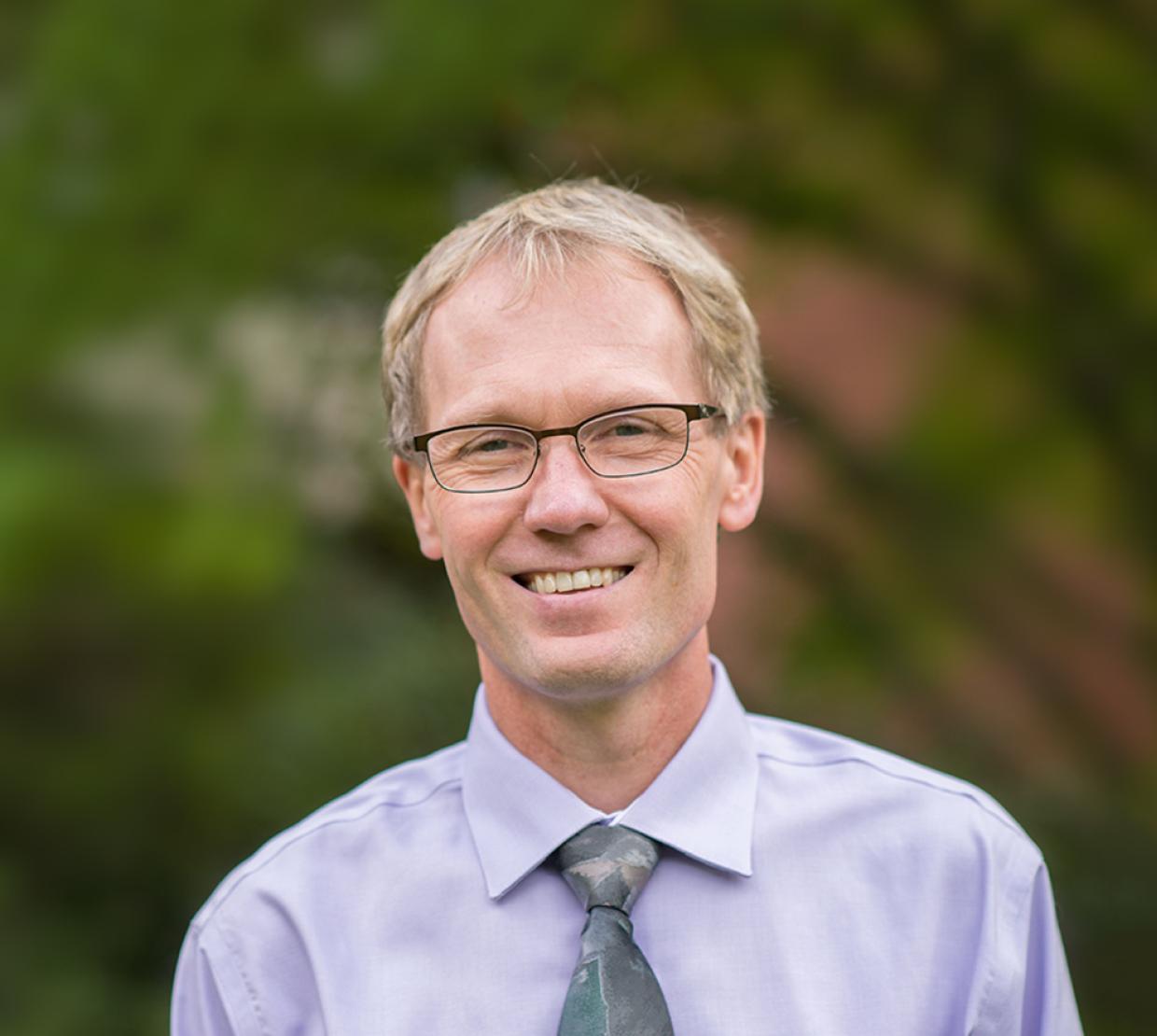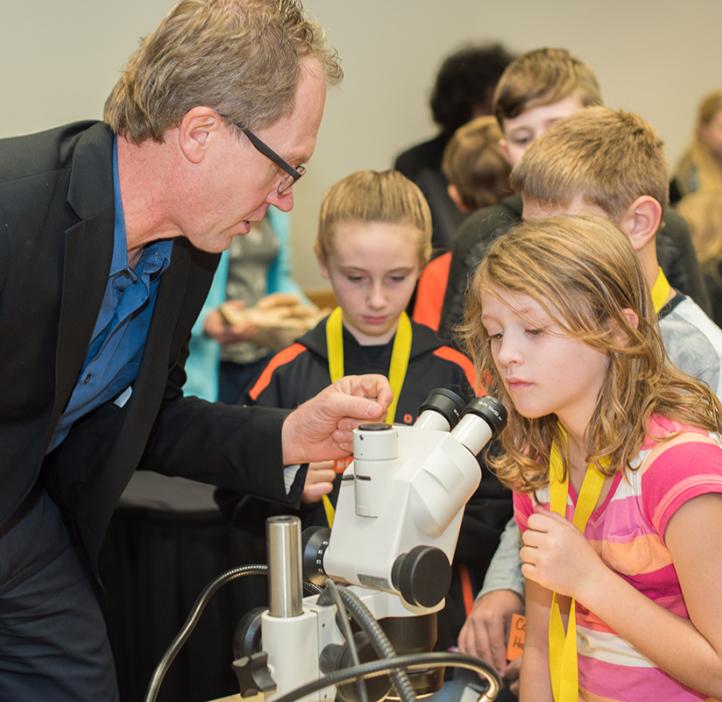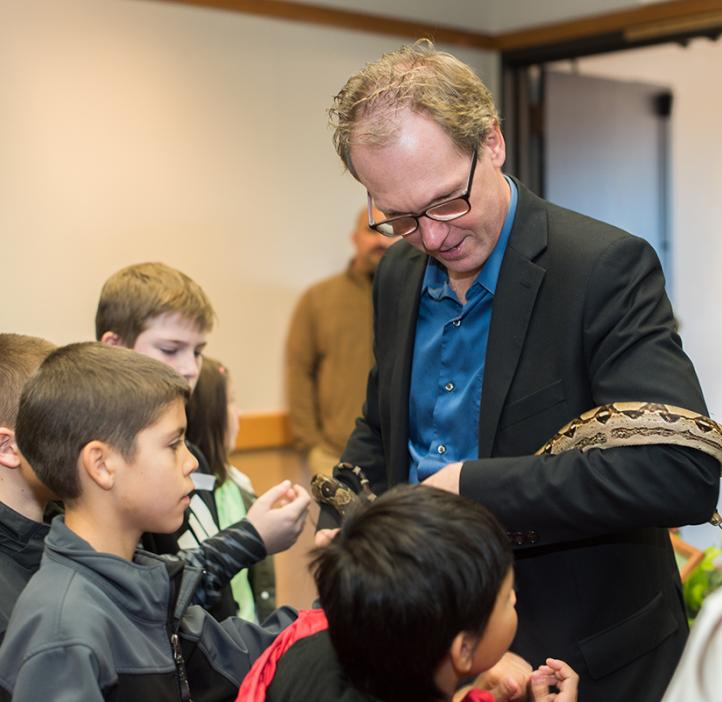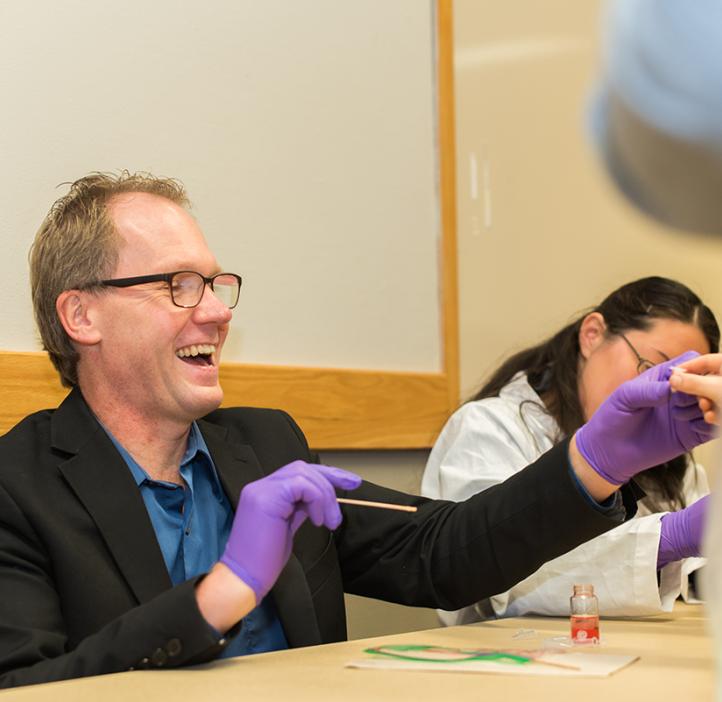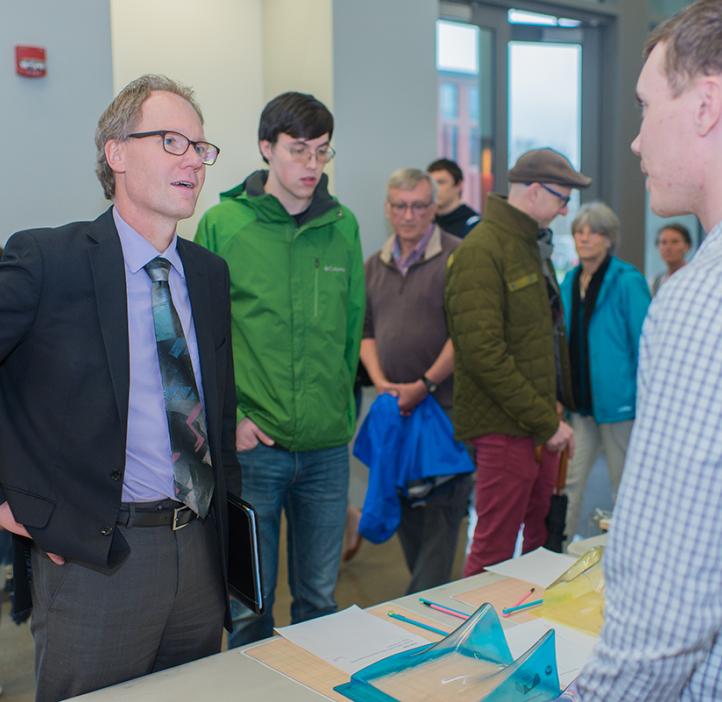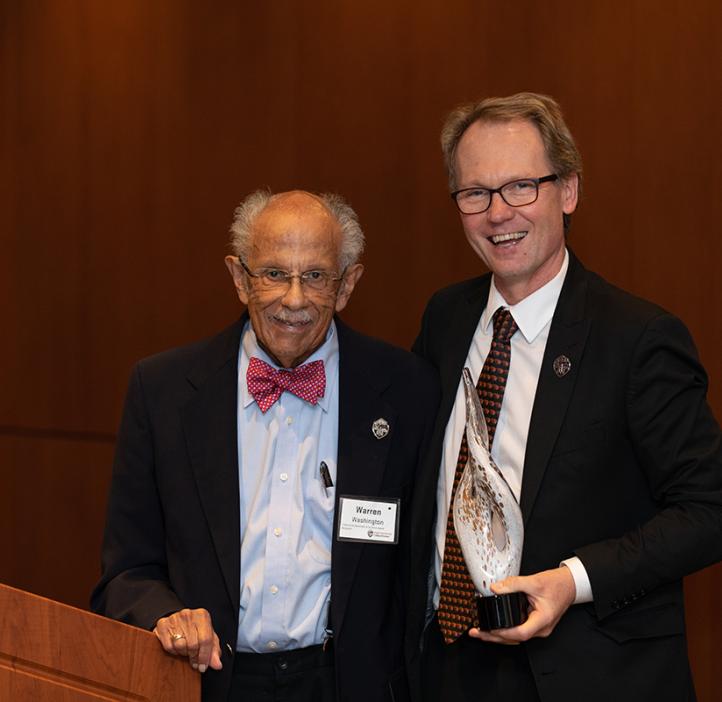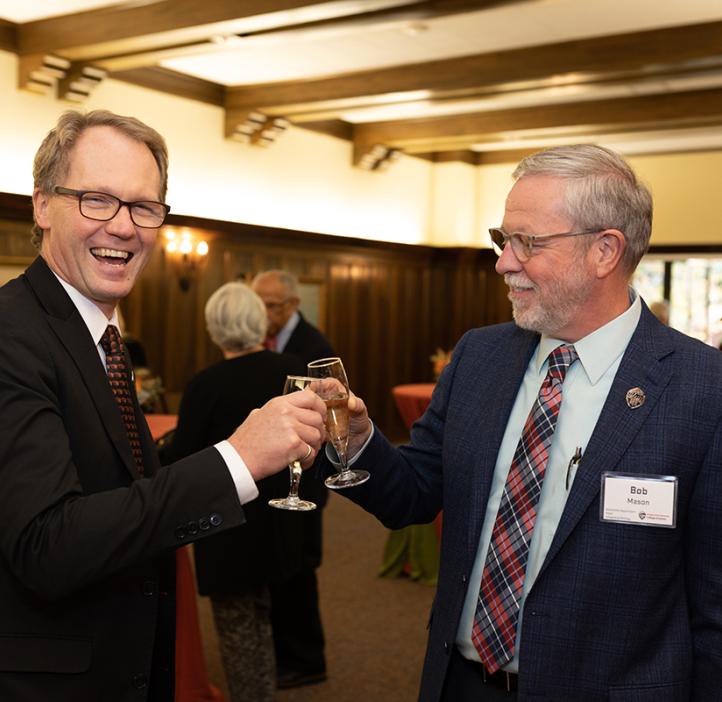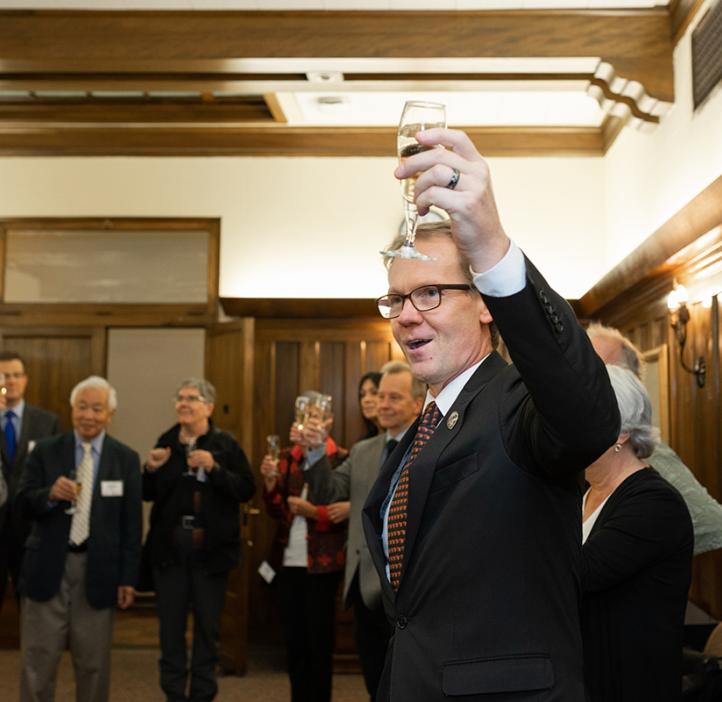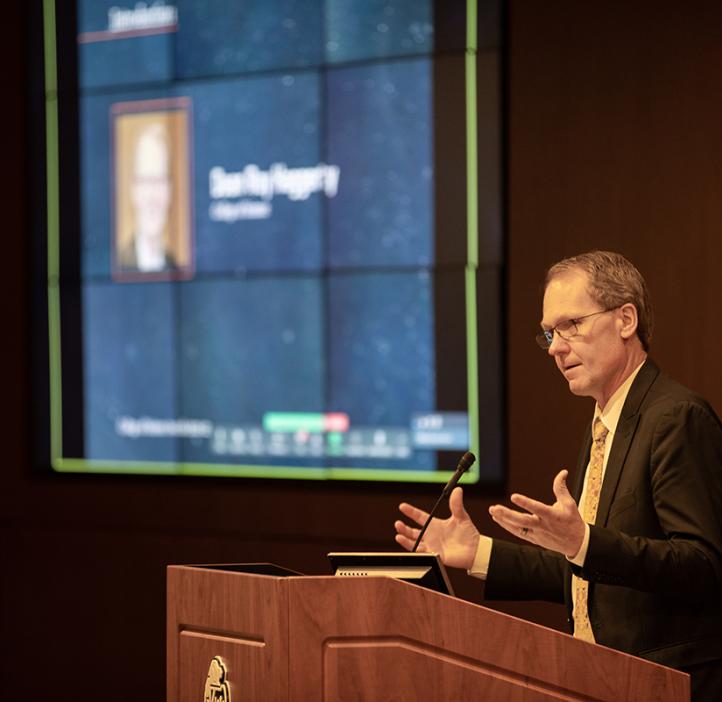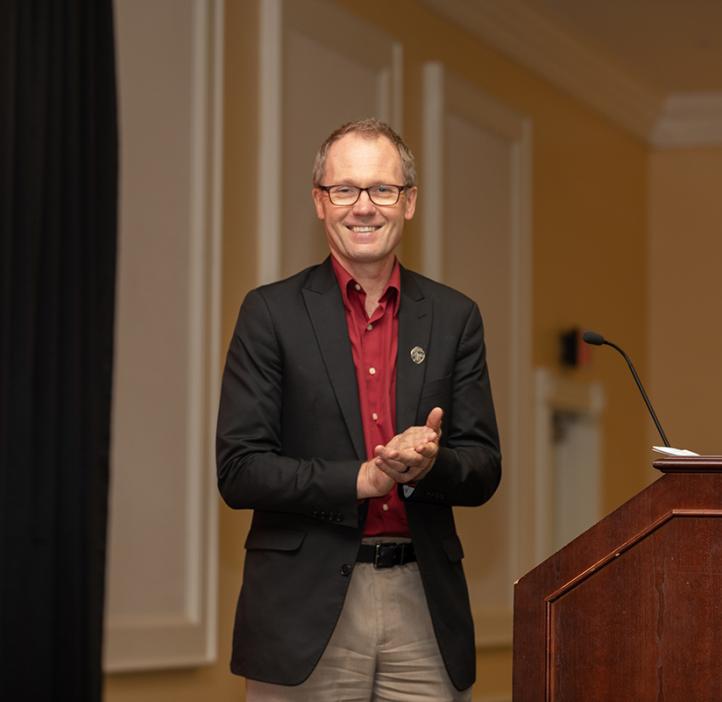With his unwavering belief in the power of science to improve lives and move the world forward, Roy Haggerty has been advancing knowledge at Oregon State for over 26 years.
An exceptional scholar and earth scientist, he has actively sought to expand his contributions as a leader by opening doors for others to develop and share a deeper understanding of the world – and to use that knowledge for the benefit of all, particularly in science, “the single greatest force for good in human history.”
Now, Haggerty – dean of the College of Science since 2017 – is leaving OSU to become executive vice president and provost at Louisiana State University, the state’s flagship institution serving more than 35,000 students.
“I have looked forward to coming to work almost every day for over 26 years. And what kind of career can one ever have where that's the case? I’ve been very fortunate.”
“I am looking forward to this opportunity,” he said. “At the same time, I am exceptionally grateful for the opportunities I’ve had here. I work on a beautiful campus with wonderful people who are trying to figure out how life and the Universe work and with brilliant students who are preparing for careers in science.
“I have looked forward to coming to work almost every day for over 26 years. And what kind of career can one ever have where that's the case? I’ve been very fortunate.”
Haggerty is widely appreciated across the university for his can-do, never-quit approach and steadfast commitment to integrity. He is also known for his humility, readily acknowledging his own limitations.
With his characteristic good humor, he often shares anecdotes that keep him grounded – like the time a teacher once likened his intellect to Einstein’s but didn’t remember him when he returned years later to say thank you. “Over my life, I've learned to care for myself, and one of the ways I do that is by being able to laugh at myself. Cultivating a small ego is a big part of that,” he said.
Originally from a rural town in Alberta, Canada, Haggerty was the first in his family to attend college, earning a B.Sc. in honors geology from the University of Alberta and a master’s and Ph.D. in hydrogeology from Stanford University.
He joined Oregon State in 1996 and was part of the College of Science faculty for 15 years before moving to the College of Earth, Ocean and Atmospheric Sciences, where he held the Hollis M. Dole Professorship in Environmental Geology for seven years. He was also interim dean for a year where he oversaw the team developing the Regional Class Research Vessel program and was instrumental in bringing the 84-foot Pacific Storm into the college fleet of research vessels.
In 2016, he was appointed associate vice president for research, where he was the chief operating officer for the Office of Research. There, he expanded the research incentives program, developed a plan to increase OSU’s facilities and administrative cost recovery and was a strong advocate for research across campus.
An elected fellow of Geological Society of America, he has led research projects totaling $9 million and published 75 peer-reviewed articles, primarly in the area of hydrology.
Advancing knowledge and human wellbeing
As dean of the College of Science, Haggerty advanced its research and teaching missions with strategic vision. He is known across OSU for fostering successful collaborations among faculty, staff, students and external partners to amplify their collective impact.
“Roy has been a spectacular dean – one who listens, anticipates, empowers and enables – a true leader,” said University Distinguished Professor Jane Lubchenco. “He leaves the rich legacy of a strong College that is full of enthusiasm, extraordinarily capable people, purpose and agency.”
Because research drives the College’s mission, Haggerty led an increase in research funding of over 50 percent. A major catalyst was SciRIS, a stage-gate research program he developed to mentor and fund high-performing teams. The program supports efforts like biochemist Ryan Mehl’s groundbreaking work expanding the genetic code, which received $5.6 million from the National Institutes of Health to launch GCE4All, the world’s first genetic code expansion (GCE) center.
"In a short time, Roy has invigorated the College, elevated students and diversified our ranks and thinking."
“Universities must expand knowledge,” Haggerty explained. “Otherwise, they become like photocopiers, and we're just photocopying a photocopy of a photocopy. And so universities – not every person at a university, not every university necessarily, but R1 universities – must be expanding knowledge. Scholarship has to drive the mission. It's absolutely essential.”
Applying knowledge to improve lives is equally important to him. At the start of the pandemic, he was an early and persuasive advocate for launching TRACE, which tested 80,000 people for COVID-19 at OSU and across Oregon. “TRACE is an excellent example of Roy’s leadership,” said Lubchenco. “It began as a seed idea from Associate Professor Ben Dalziel, shared with Roy and me, and blossomed into a pioneering program that became a national model for universities serving their communities.”
Inclusive excellence and student success
With nearly every OSU student taking science classes, education has always been a central focus for Haggerty. To help close retention gaps, he co-founded Beaver Connect, a university-wide mentoring program that pairs students with faculty and peer mentors. The initiative boosted first-year retention among underrepresented, first-generation, and Pell-eligible students by 7.4%.
“In Roy, I have seen a leader who is focused on creating a welcoming College so that everyone, students, faculty and staff, can thrive and succeed.”
To strengthen diversity, equity and access, Haggerty initiated the development of the College’s first diversity action plan, Embedding Equity, Access and Inclusion and oversaw the hiring of its first full-time director of equity, access and inclusion in March.
“In Roy, I have seen a leader who is focused on creating a welcoming College so that everyone – students, faculty and staff – can thrive and succeed,” said Kameron Kadooka, director of equity, access and inclusion. “I have seen a leader who is willing to listen, learn and grow – and a leader who has compassion and empathy for others while remaining focused on moving the College forward."
Haggerty also co-founded and co-led the Undergraduate Student Success Initiative and enhanced the College’s Learning Assistants program, which has significantly improved student success rates in gateway courses in physics, chemistry, mathematics and biology.
One of his first major challenges as dean was a significant structural budget deficit. He balanced the College’s $45 million budget in one year – primarily through revenue-generating activity and trimming central administration – and maintained a balanced budget for three additional years, including during the pandemic. Under his leadership, the College has had some of its strongest years of private fundraising, securing more than $40 million in the past 4.5 years.
He leaves optimistic about the College’s many strengths and hopeful future. “Many new faculty are going to be joining us, and that's going to bring new life and energy into an already great place," he said. "The research mission will continue to grow, and I’m confident that Oregon State is going to have some really big successes in the College of Science in the next few years.
“We're also starting to have positive developments in the equity, access and inclusion area. I think we're doing this in a healthy way. We’re having honest conversations that I think are going to help us to be better in this space in the coming years.”
Provost Ed Feser praised Haggerty as “a tireless supporter of building strong departments and faculty as the foundation of a great university.” By the time Haggerty steps down in July, he will have overseen the hiring of more than one-fifth of the College’s current faculty.
Feser also commended him for establishing two major research centers: the NSF-funded North American Nanohertz Observatory for Gravitational Waves (NANOGrav) and the NIH-funded Genetic Code Expansion for Biomedical Research.
He and other colleagues note that Haggerty has served the College of Science and the entire university with passion, leaving OSU a stronger a place.
“In a short time, Roy has invigorated the College, elevated students and diversified our ranks and thinking. We will miss Roy and Amanda dearly and wish them well in all of their endeavors,” Lubchenco said.
